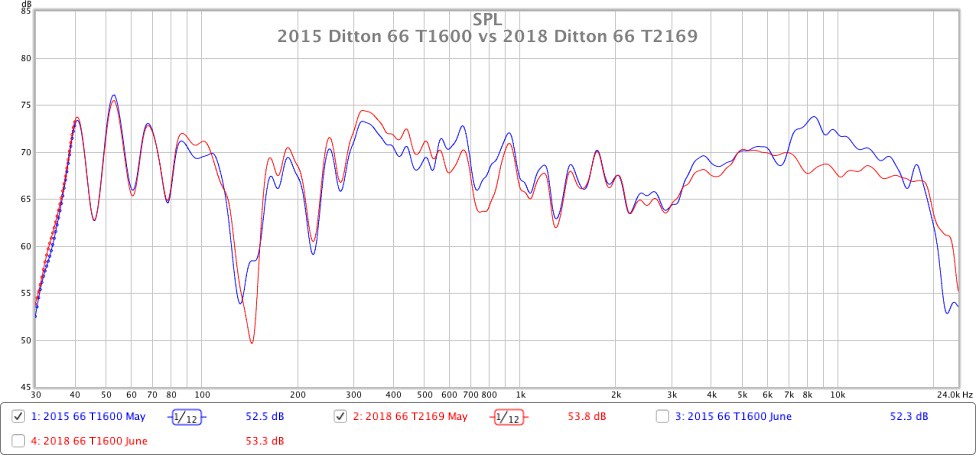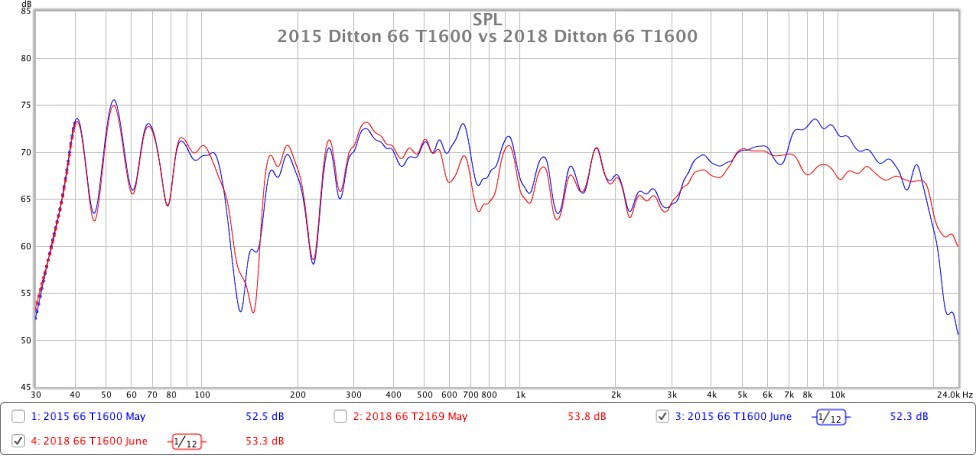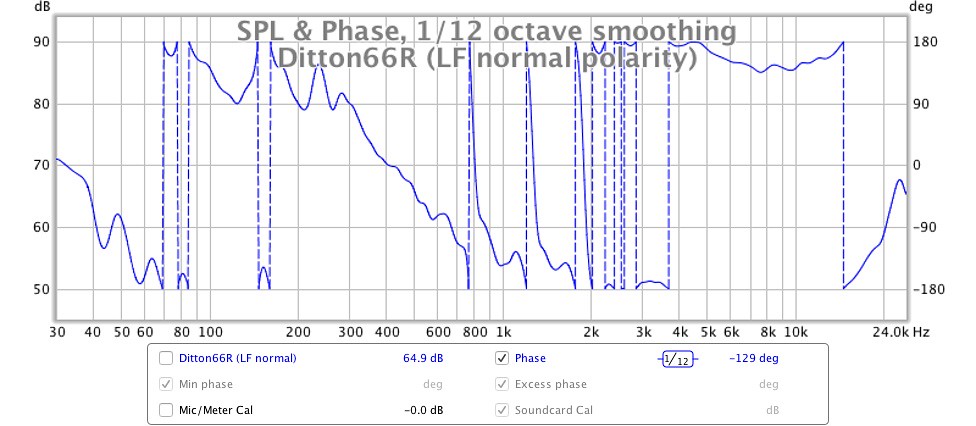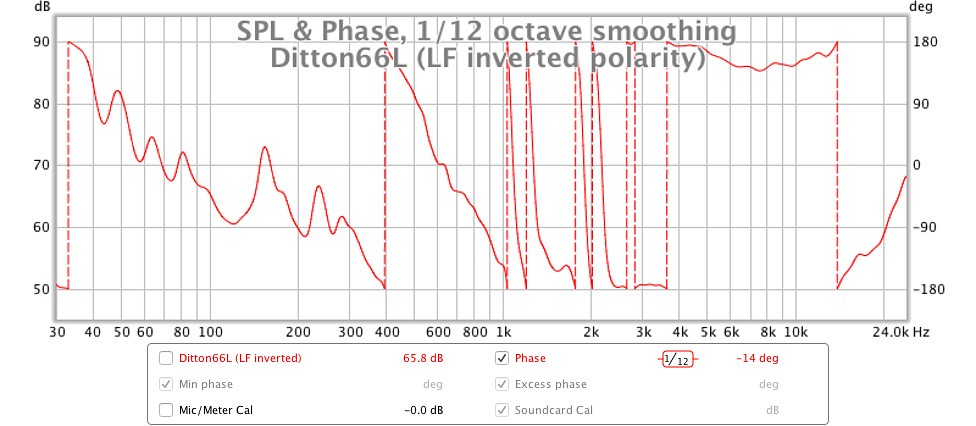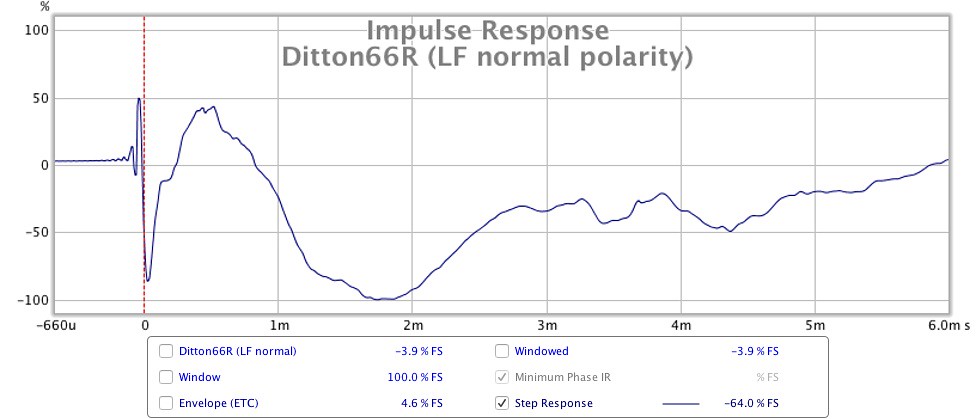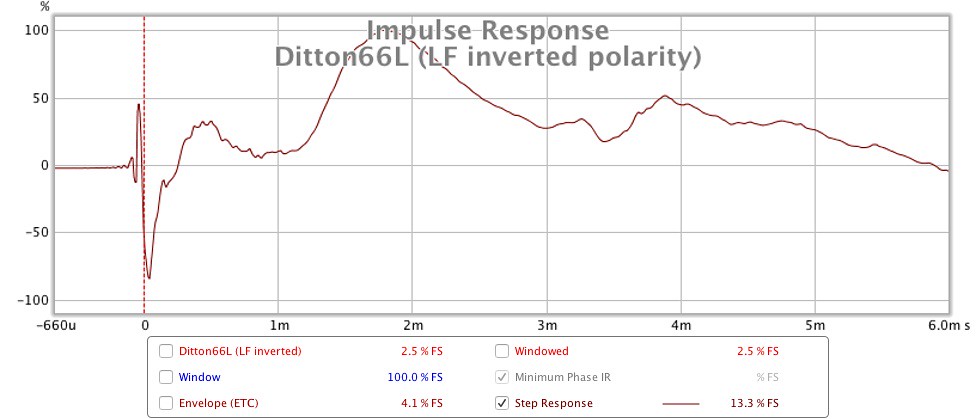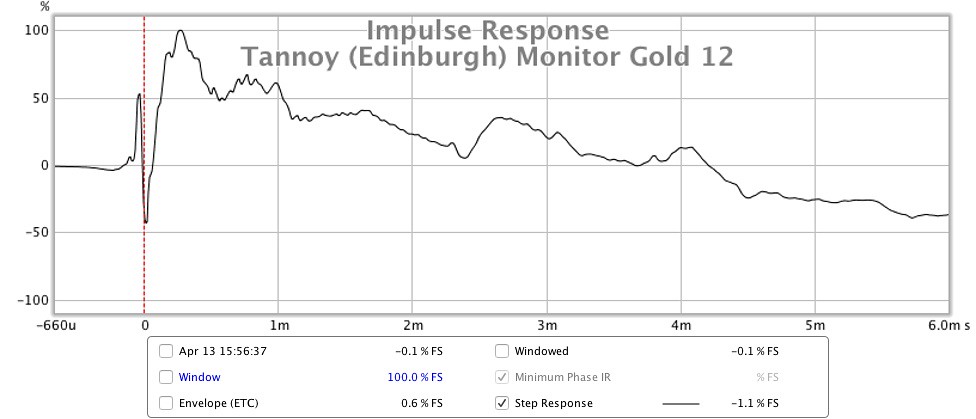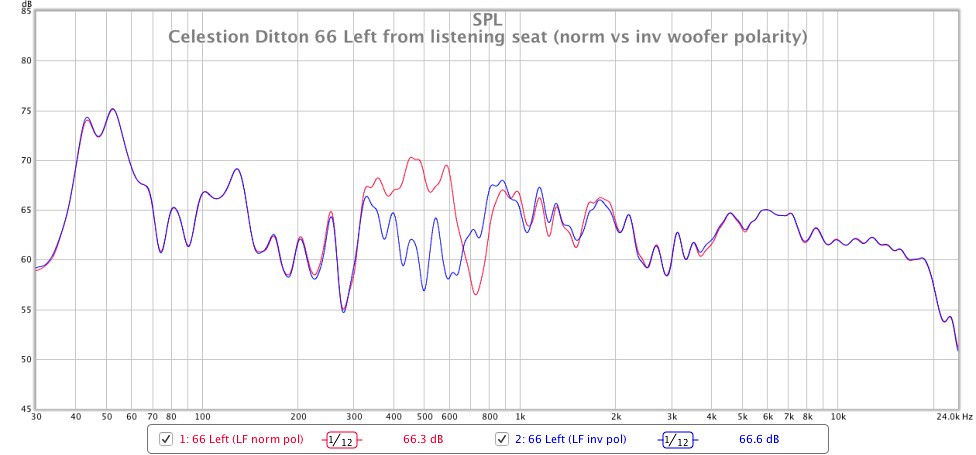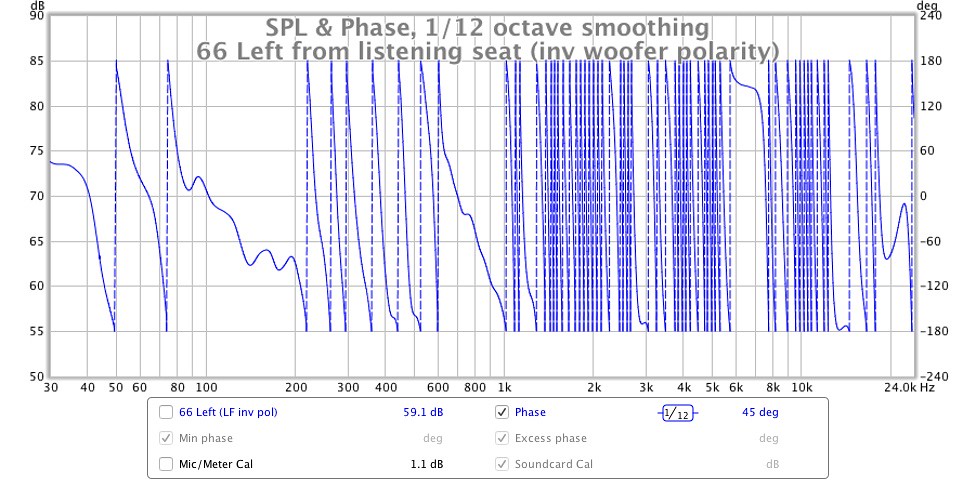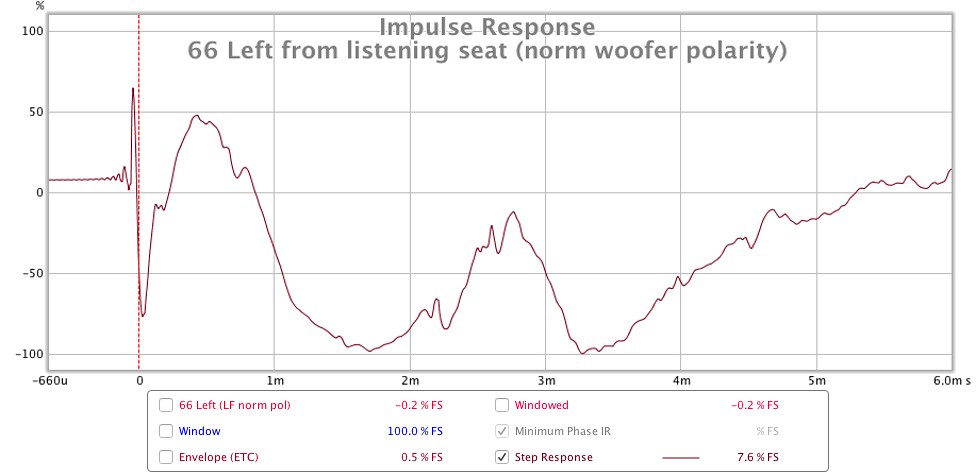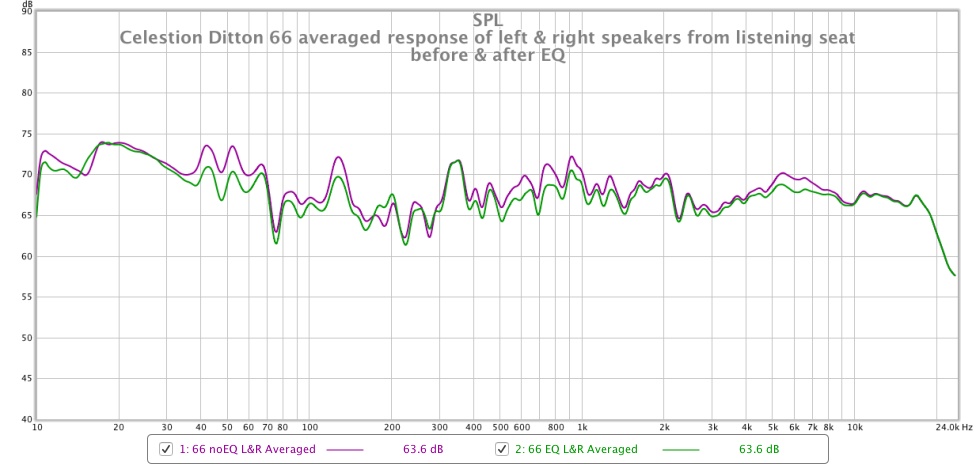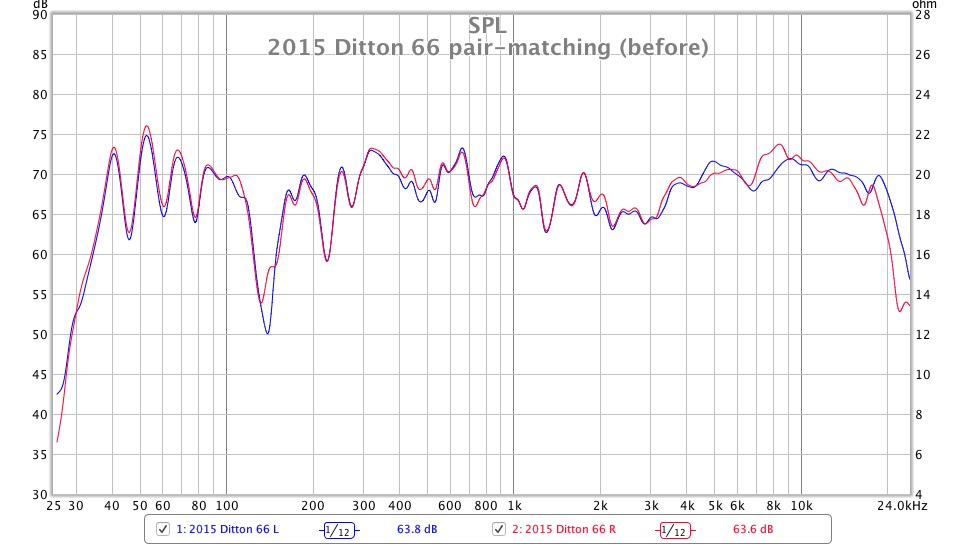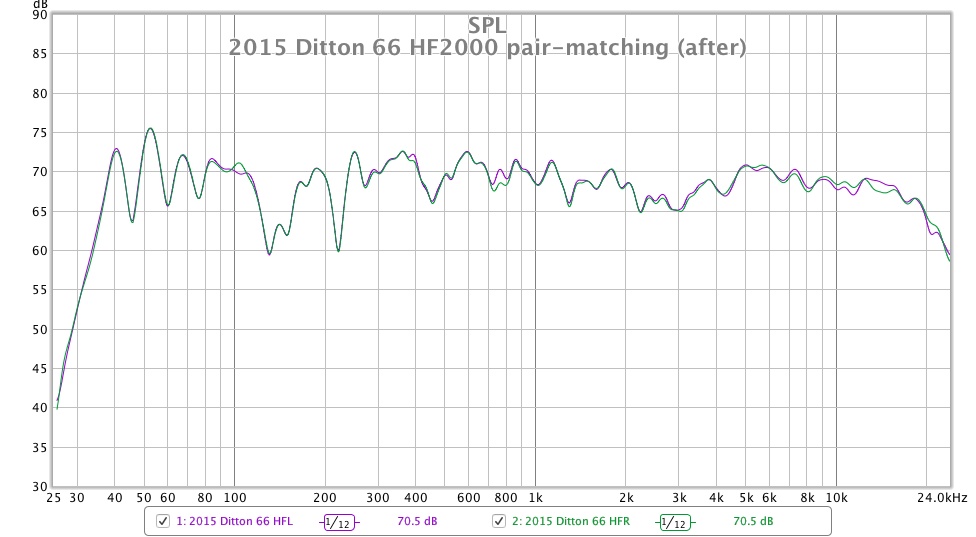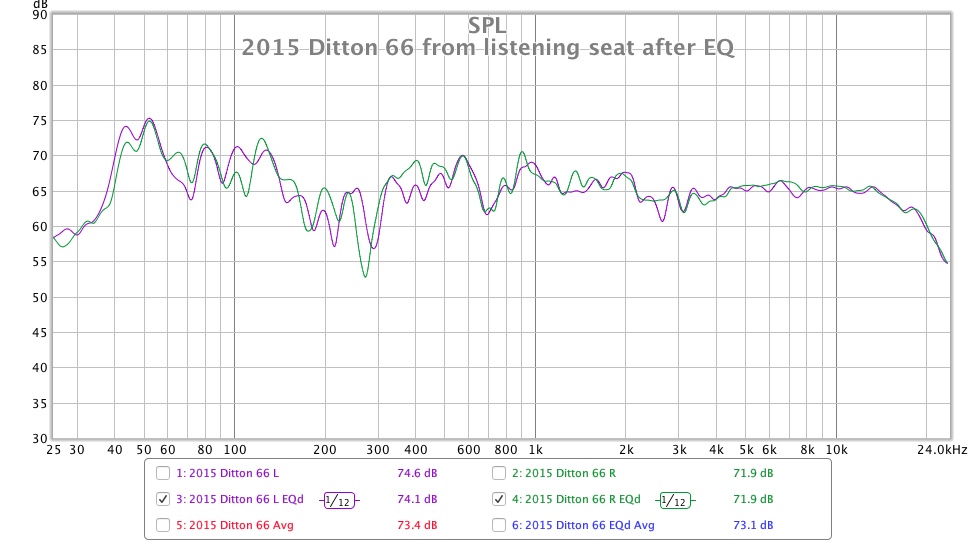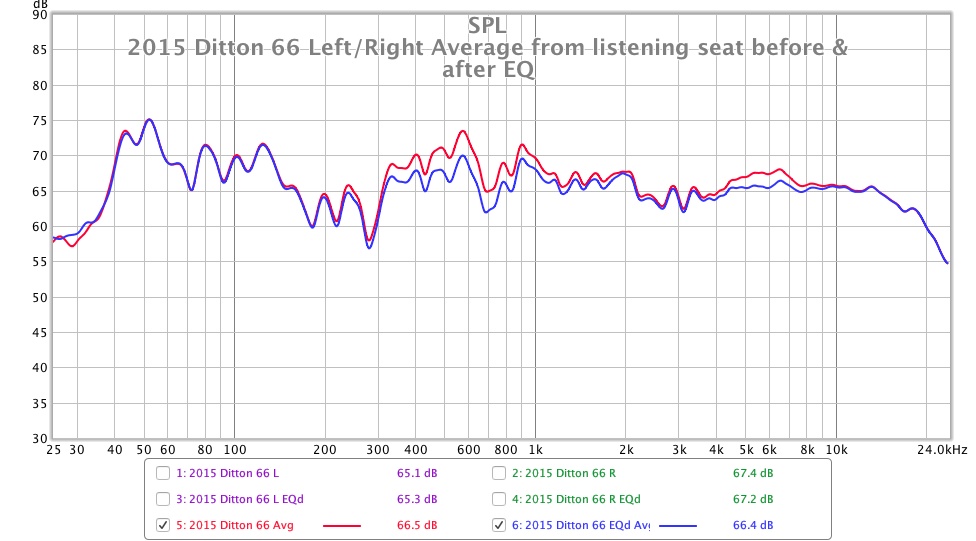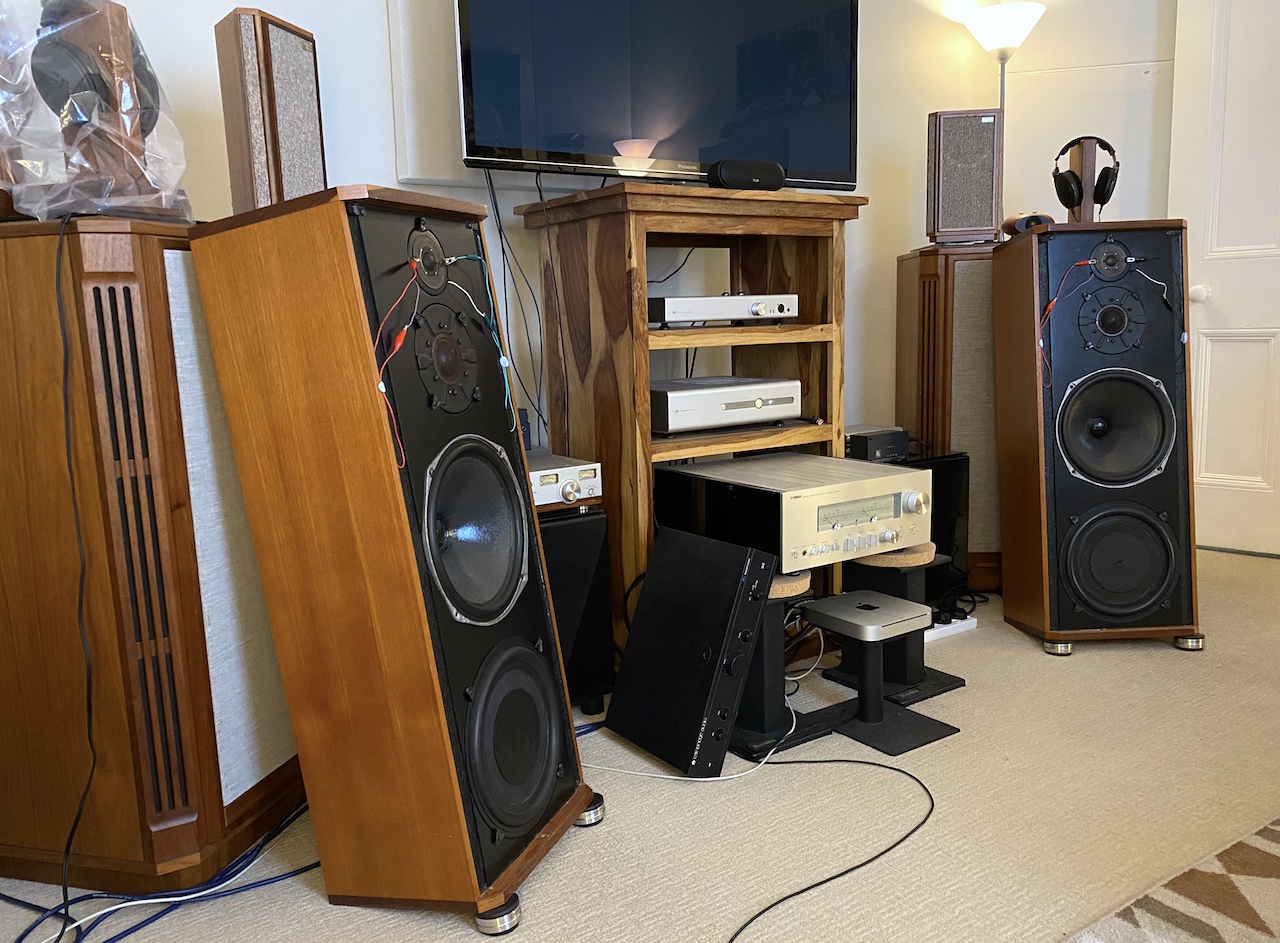Thought I should update this thread with how my Ditton 66s have been tweaked since my last post. In short, nothing much has changed. I still have the polarity of the woofers inverted to provide a cleaner response through the LF/MF crossover area. I have however since taken time to integrate my subs. I'm running the 66s full range and have set the XO frequency of the subs to where the <40Hz roll-off is minimised but the >40Hz peak isn't added to. Getting this dialled in exactly was finicky but doable with Periodic Pink Noise, an RTA and a steady hand!
I have EQ'd the entire system in 4 areas:
1) notch filter at 48Hz to capture the 42Hz, 45Hz and 52Hz room modes;
2) notch filter at 130Hz to control a response peak;
3) wide notch filter at 750Hz to attenuate mid frequencies;
4) notch filter at 6kHz to smooth MF/HF crossover region.
I used measurements to guide me where to set the centre frequency for each notch filter, but I ultimately used my ears to determine what areas of the frequency response needed to be ameliorated and how much EQ should be used to achieve this. My approach was to use the least amount of EQ possible to obtain an even-handed sonic presentation that is detailed and transparent but has no areas that draw undue attention.
The BBC-esque dip at 3kHz is a classic feature of the 66 tuning, as is the 5kHz-6kHz bump. (The 5kHz-6kHz bump is most noticeable when listening on-axis with the mid unit, which is how I prefer to listen to these speakers). I found that EQ'ing the bump completely flat robbed too much excitement so I left a little lift in.
I verified all EQ adjustments by listening and measuring in
several locations around my listening seat to ensure I ended up with a response that was balanced and didn't create more problems than it fixed. Sadly I didn't save all of those measurements so am unable to upload an average of them.
The following graph shows a before & after EQ
from my listening seat, with the left & right speakers averaged into a single measurement:
Some will no doubt argue I've ended up with a tonal balance on the brighter side of neutral, and they are perfectly entitled to this opinion! As I say, I have not been led by target house curves, I have EQ'd the system so that it sounds both natural and neutral to
my ears.

This was all done with the speaker grilles OFF. As much as I think these speakers look best with the grilles on, they do have a significant effect on the frequency response, knocking an average of 2dB off everything above 4kHz (the effect isn't entirely linear so I suspect the metal grid structure diffracts certain frequencies more than others), which is detrimental to the transparency/clarity and crispness of the presentation IMO.
Although it took some fettling to get there, these Ditton 66s in the current configuration are probably the most satisfyingly balanced and articulate 'big monitors' I've thus far had the privilege of owning.



